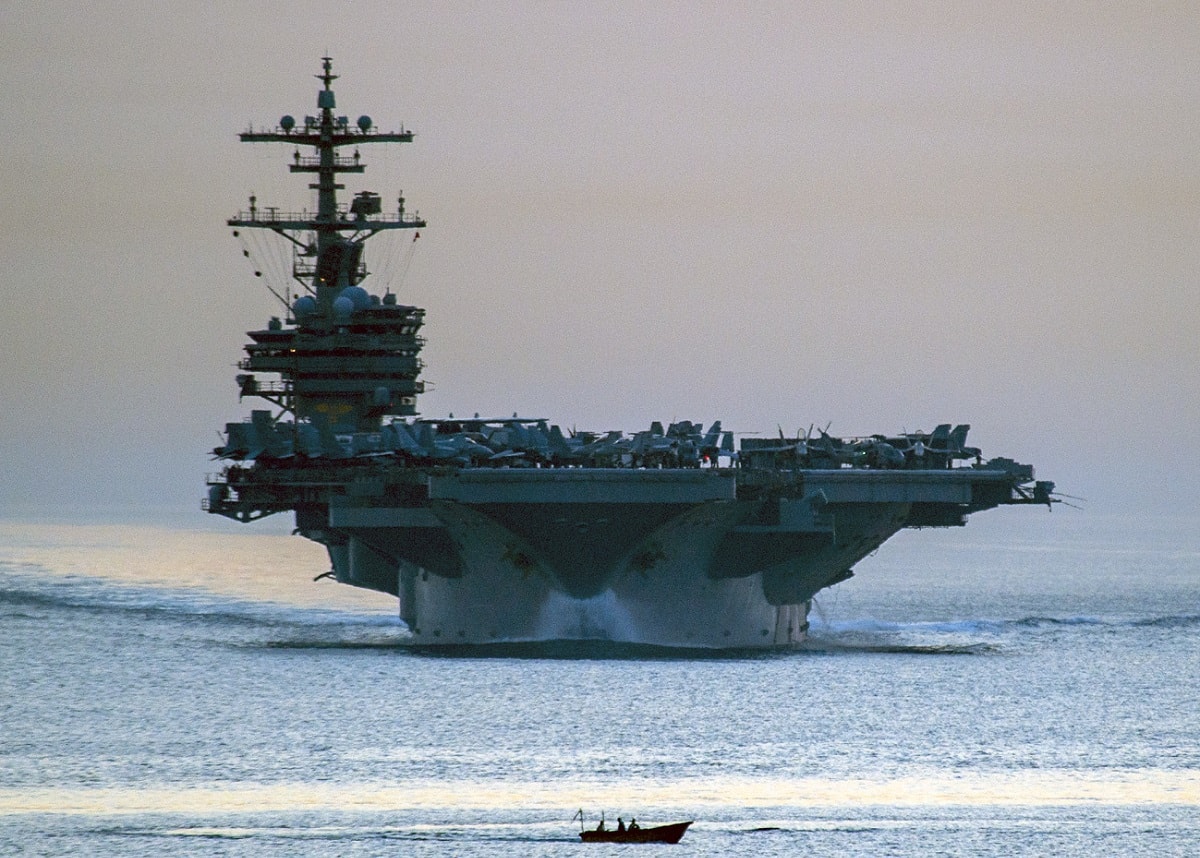Clearly the Russian military is thought of and prides itself – at least, until Ukraine – as a land-based power. And yet, the Russian Navy is one of the most formidable. Even though they have powerful warships and submarines, Moscow still craves one thing: a nuclear-powered aircraft carrier: Currently, the Russian Navy’s only aircraft carrier, Admiral Kuznetsov, is in drydock and unlikely to return to active service until late next year – and that is at the very earliest. The carrier has been met with numerous problems while undergoing a refit, yet Russia has remained committed to seeing it returned to service.
One reason is that cash-strapped Moscow simply has lacked the money to build a new carrier, and the situation isn’t likely going to improve as the country was hit with international sanctions following its unprovoked invasion of Ukraine last month.
Russia’s Nuclear-Powered Aircraft Carrier Dream
That isn’t to say that the Kremlin wouldn’t like a newer and more powerful carrier – even a nuclear-powered carrier. In May 2019, there were reports in the Russian state media that its ministry of defense was exploring plans to begin construction of a planned 70,000-ton carrier. Construction was slated to begin in 2023. However, few details have been announced since, and it could be safe to assume the nuclear-powered carrier is essentially “dead in the water.”
However, it wasn’t the first time that the military minds in Moscow had sought to develop a nuclear-powered carrier on the scale of those in service with the United States Navy. The Kremlin ordered the construction of a new supercarrier in the 1980s that would be on par with those of its likely adversaries and looked to the previously canceled Project 1153 Orel (Eagle), which never advanced beyond the blueprint stage.
With a displacement of 85,000 tonnes, the Soviet supercarrier would have been larger than the U.S. Navy’s Forrestal-class aircraft carriers, yet still smaller than the then-contemporary Nimitz -class. Much like the planned Russian carrier, the Soviet Union’s supercarrier was also to feature a nuclear-powered propulsion system that included four KN-3 reactors feeding four steam turbines and driving as many shafts through 280,000 horsepower output. The ship’s maximum speed was estimated to be 30 knots in ideal conditions, and as with the U.S. Navy’s supercarriers, the range was essentially unlimited. The reactors would have a service life of twenty to twenty-five years before the vessel’s required mid-life refueling.
A Soviet Nimitz-class Aircraft Carrier?
The new warship – which was initially to be named Kremlin before being renamed Ulyanovsk in honor of the birthplace of Vladimir Lenin – was to represent a major advancement over the Kuznetsov-class, which utilized a ski-jump to launch aircraft. This would have included a flight deck equipped with two steam catapults that could launch fully-loaded aircraft, yet the design still featured a ski-jump to allow for rapid launching of its contemporary fighters. Three hanger elevators, two of which were starboard and one port, would provide access to the lower hangar decks.
The Soviet Union had clearly paid attention to U.S. Navy carrier evolution, yet the carrier still would have been a warship of the Motherland. The configuration of the planned carrier would have been similar to the U.S. Navy’s Nimitz-class, but with the addition of a dozen P-700 “Granit” surface-to-surface and “Buk” surface-to-air missiles systems, as well as eight CADS-N-1 Close-in Weapons Systems (CIWS) and eight AK-630 rotating anti-aircraft cannons to address incoming aerial threats.
The Soviet carrier’s air wing was to include upwards of sixty-eight aircraft including a combination of Sukhoi Su-33/Su-27K and Mikoyan MiG-29K fighters, Yakovlev Yak-44 RLD Airborne early warning aircraft, Kamov Ka-27 anti-submarine warfare (ASW) helicopters and Ka-27PS Air-sea rescue helicopters.
The Aircraft Carrier that was Ordered but Never Delivered
Officially ordered on June 11, 1986, the keel of the Ulyanovsk was laid down on November 25, 1988 at the shipyard Nikolayev 444 in the Black Sea. The planned launch date was to be sometime in 1995, and would have allowed the Soviet Union to be only the second nation to launch a nuclear-powered carrier.
However, the collapse and dissolution of the Soviet Union ended the program when Ulyanovsk was just twenty percent completed. Even before the official dissolution of the Soviet Union in 1991, construction was had been halted for extended periods due to lacking of funding. Unlike the other Soviet carriers that were completed or sold off, the unfinished carrier was sold for scrapping in 1992 – finally ending the Soviet Navy’s only attempt to build a nuclear-powered supercarrier. Russia’s efforts to build a nuclear-powered carrier have fared little better. Perhaps it should quit while it isn’t any further behind.
Now a Senior Editor for 1945, Peter Suciu is a Michigan-based writer who has contributed to more than four dozen magazines, newspapers and websites. He regularly writes about military hardware, and is the author of several books on military headgear including A Gallery of Military Headdress, which is available on Amazon.com. Peter is also a Contributing Writer for Forbes.

